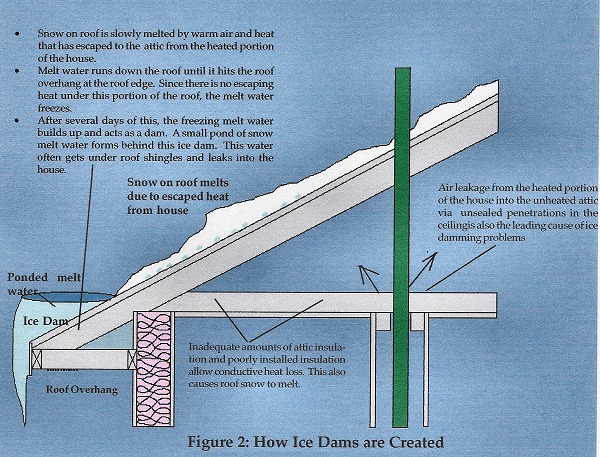Heater In Attic To Melt Snow

If heat cables are correctly and professionally installed they can be very useful in minimizing water buildup behind ice dams.
Heater in attic to melt snow. And the extra heat is not just a summer concern come winter hot attic air can melt snow on the roof during the day only to refreeze when temperatures drop overnight creating ice dams that lead. Keep the temperature of the space under your roof cold i e. In cold climates that leads to ice dams. This can be done by making sure there s proper insulation and air ventilation in the attic to keep it the right temperature.
Make your attic the same temperature as the outdoors if you have one. Over the other units enough heat escapes into the attics to melt most of the snow. The snow is a great insulator so it would do its best to hold the heat inside of your attic space. Just mocking your attempts to melt it.
Keep it close to the temperature outside so little or no heat is transferred to the roof where it can melt the snow. Advantages of installing heat cables. Install heat cables to melt the snow at the edge of the roof. The difference between this photo and the first is that the garage is unheated so there s just not much.
The key to a successful snow melting system is in how it s embedded. That wouldn t be my first choice if you use an oil filled heater that would be better than an electric grid heater better yet if your heating and ac system has duct work or flex duct install a vent in the run that way you can control the amount of heat that is used but you know its gonna have to get kinda warm up there to melt snow through decking and what ever your roof is covered with. The same is true of the spacing of the heating cable. As the snow melts water runs down the roof and when it gets to the edge eaves of the roof which are cold it once again freezes.
It is specifically designed to help prevent the ice dam issue. If it s too shallow or exposed it could overheat and fail. Hire a professional to insulate the floor of the attic and install air ventilation. Make sure your heating element is 2 3 from the final surface.
Last week s polar vortex forced you to blast the heat in the house but without proper insulation that heat could have been trapped in your attic potentially leaving you with a roof ice dam. Attic door ceiling lights. Heat cables are a much cheaper solution than fixing the source of the problem by sealing air leaks in the attic installing adequate insulation and creating proper ventilation. If it s too deep it won t be able to effectively melt snow or ice.
Snow starts to melt in certain areas of the roof which are warmer than others due to heat loss from the attic. Over that third unit from the left there s little heat getting into the attic as evidenced by the unmelted snow.
















































